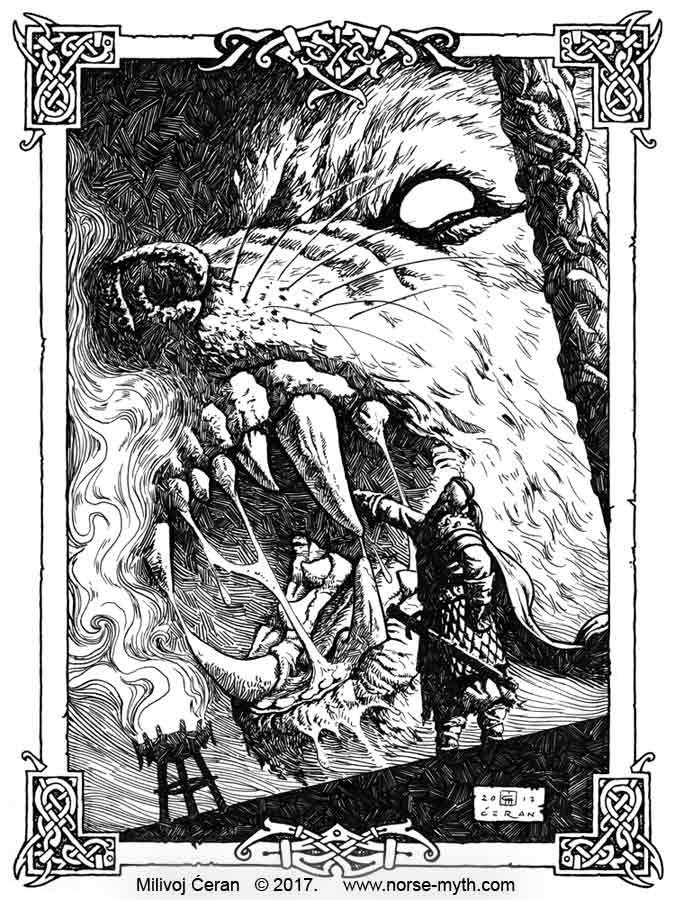the scale of Fenrir.
There's a certain misguided amount of people who read The Binding of Fenrir story and feel sorry for the wolf. What they don't realize in their anthropomorphizing the animal is that he's by literal & figurative scale a huge problem, a monster of unchangeable nature, and not even close to human or divine at all.
To NorsePlay, Fenrir is hunger unbound, a force so large it's cosmically unfair to begin with. If the Gods had come at him on his own brutally honest terms, there's no one strong enough to outstrip this creature, and he'd have won. Just like Thor wrestling Old Age, no one can beat Hunger itself. And so the wolf must be tricked before he eats them, and he would've eventually eaten all the material of the Nine Worlds. Fenrir is a devourer. In focusing Fenrir's appetite on Odin alone, this diverts him and saves us.
And so Odin wins the rest of this cycle to figure out how to save everything including himself. Unless another strategy is invented between now & then, the post-mortem answer is the birth of Víðarr, the God of Vengeance who breaks Fenrir's jaw, which allows the next cycle to be free of the immeasurable threat the wolf poses.
[Tyr and Fenrir ink & paper illustration by Milivoj Ćeran from his 2017 Gate to Valhalla book.]


Comments
Post a Comment